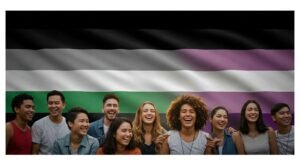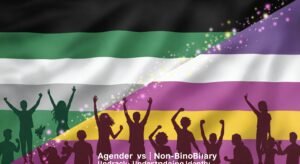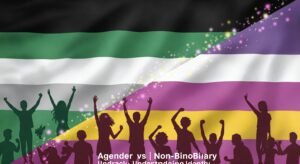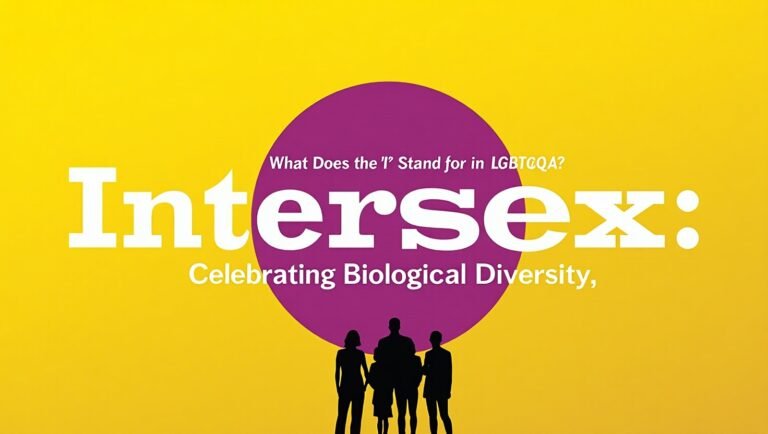Difference Between Agender And Non Binary
In today’s rapidly evolving understanding of gender identity, terms like agender and non-binary are becoming increasingly common in discussions about gender diversity, yet they remain frequently confused or conflated. While both identities fall under the transgender umbrella, they represent fundamentally different experiences of gender that are important to distinguish. This comprehensive guide will explore the nuanced difference between nonbinary and agender identities, helping readers understand where these experiences overlap and where they diverge.
The growing visibility of non-binary vs agender identities in media and society reflects an important shift toward recognizing the full spectrum of gender experiences beyond the traditional binary.
. This comprehensive guide will explore:
- Detailed definitions of non-binary and agender identities
- Historical context and evolution of these terms
- Key differences and overlapping aspects
- Pronoun usage and language considerations
- Support resources and community organizations
- How to be an effective ally
We’ll also showcase stylish ways to express your identity with LGBTQ CLOTHING, featuring agender and non-binary pride apparel that celebrates these identities.
Non-Binary Identity: Definition and Spectrum
Non-binary is an expansive umbrella term for gender identities that exist outside the traditional male/female binary. The term first emerged in academic circles in the 1990s but gained mainstream recognition in the 2010s as part of growing conversations about genderfluid vs nonbinary experiences. Non-binary encompasses a wide range of identities including:
- Genderfluid (experiencing shifts between genders)
- Bigender (identifying with two genders)
- Demigender (partial connection to a gender)
- Agender (lack of gender, discussed in detail later)
- Neutrois (neutral gender identity)
When examining nonbinary vs agender identities, it’s important to understand that while all agender people fall under the non-binary umbrella, not all non-binary people are agender. This distinction helps clarify the difference between agender and nonbinary experiences.
Non-Binary Experience
Many non-binary individuals describe their gender as:
- A unique blend of masculine and feminine traits
- Something completely separate from the gender binary
- Changing over time (for genderfluid individuals)
- Minimal or nonexistent (for those close to agender identities)
The science behind nonbinary identities continues to evolve, with research suggesting these experiences reflect natural variations in human gender perception and expression. When considering genderfluid vs agender experiences, the key difference lies in the presence versus absence of gender identity.
Pronouns and Language
Non-binary individuals may use:
- They/them (most common gender-neutral option)
- Neopronouns (xe/xem, ze/hir, fae/faer)
- Multiple pronoun sets (she/they, he/they)
- No pronouns (using only their name)
Celebrate your identity: Explore our Non-Binary Flag LGBTQ T-Shirt or Non-Binary Hoodie.
Agender Identity: Definition and Meaning
Agender (literally “without gender”) describes individuals who feel:
- A complete absence of gender identity
- Neutral or null gender experience
- Disconnection from the concept of gender entirely
The term first appeared online in 2000 but describes an experience that has existed throughout history across various cultures. When exploring what does it mean to be agender, it’s important to distinguish it from related identities like neutrois vs agender or gendervoid vs agender.
Agender Spectrum
Agender identities include:
- Gendervoid (feeling a void where gender would be)
- Neutrois (neutral gender, sometimes considered distinct)
- Genderblank (rejecting gender entirely)
Pronoun Usage
Common pronoun choices include:
- They/them (most widely accepted)
- It/its (used by some but controversial)
- No pronouns (name-only reference)
- Neopronouns (ae/aer, ne/nem)
Express yourself: Check out our Agender Flag Sweatshirt or Agender Hoodie.
Key Differences Between Agender And Non Binary
| Aspect | Non-Binary | Agender |
|---|---|---|
| Core Experience | Outside male/female binary | Complete lack of gender |
| Gender Feeling | May have a defined gender identity | No gender identity |
| Inclusivity | Umbrella term (includes agender) | Specific identity |
| Relationship to Gender | May be fluid, mixed, or undefined | Typically static and neutral |
| Pronoun Preferences | Varies widely | Often they/them or no pronouns |
Overlap and Distinction
While all agender people are technically non-binary (since they don’t fit the binary), not all non-binary people are agender. Some key distinctions:
- A non-binary person might feel “both genders” or “a third gender”
- An agender person typically feels “no gender at all”
Comparison with Related Identities
- Genderfluid vs Agender: Genderfluid people experience changing genders; agender people experience none
- Neutrois vs Agender: Neutrois implies neutral gender; agender implies no gender
- Gendervoid vs Agender: Essentially synonymous, with slight personal preference differences
Supporting Agender and Non-Binary Individuals
Best Practices for Allies
- Pronoun Respect
- Always ask and use correct pronouns
- Practice using they/them until it feels natural
- Don’t make assumptions based on appearance
- Language Matters
- Use gender-neutral terms (partner, parent, folks)
- Avoid gendered compliments (“pretty/handsome”)
- Respect name changes
- Advocacy and Education
- Correct misinformation when safe to do so
- Support gender-neutral facilities
- Promote inclusive policies at work/school
- Community Support
- Donate to organizations like The Trevor Project
- Share resources from GLAAD and NCTE
- Support LGBTQ-owned businesses like LGBTQ CLOTHING
Frequently Asked Questions.
1. Can someone be both agender and non-binary?
Yes, since agender falls under the non-binary umbrella, many use both terms to describe their experience.
2. What’s the difference between agender and asexual?
Agender relates to gender identity (lack of gender), while asexual relates to sexual orientation (lack of sexual attraction).
3. Do agender people experience gender dysphoria?
Some do when forced into gendered roles, while others simply feel neutral about gender.
4. Are there famous agender or non-binary people?
Yes! Public figures like Indya Moore (non-binary) and performers like Sam Smith (non-binary) are increasing visibility.
5. How do I know if I’m agender?
Common signs include:
- Feeling disconnected from gender concepts
- Discomfort with gendered terms
- Preference for gender-neutral everything
- Feeling “nothing” when asked about gender
6. Is non-binary the same as intersex?
No – intersex relates to biological sex characteristics, while non-binary relates to gender identity.
Historical and Cultural Context
Ancient Precedents
Many cultures have recognized non-binary and genderless identities for centuries:
- Hijra in South Asia
- Two-Spirit in Indigenous cultures
- Sekhet in ancient Egypt
Modern Recognition
- 2000: Term “agender” first appears online
- 2014: “Non-binary” added to Merriam-Webster
- 2020s: Increasing legal recognition worldwide
Resources and Next Steps
Support Organizations
- The Trevor Project (crisis support)
- GLAAD (media advocacy)
- National Center for Transgender Equality
Further Reading
- “Gender Queer” by Maia Kobabe
- “Beyond the Binary” by Alok Vaid-Menon
- “The Gender Identity Workbook” by Kelly Storck
Express Your Pride
Explore our full collection at LGBTQ CLOTHING featuring:
- Non-binary flag apparel
- Agender pride clothing
- Gender-neutral fashion
Conclusion: Embracing Gender Diversity
Understanding the difference between agender (having no gender identity) and non-binary (existing outside the male/female binary) is essential for fostering inclusivity while agender individuals feel gender-neutral or absent of gender, non-binary people may identify with multiple genders, a fluid identity, or something beyond the binary. Both identities are valid and personal, reflecting the diverse spectrum of human experience, and as language evolves to better capture these nuances, respecting individual identities and pronouns remains fundamental. Everyone deserves affirmation in their gender journey, so let’s continue learning and supporting one another share your thoughts or questions below on how your understanding of gender has grown!










